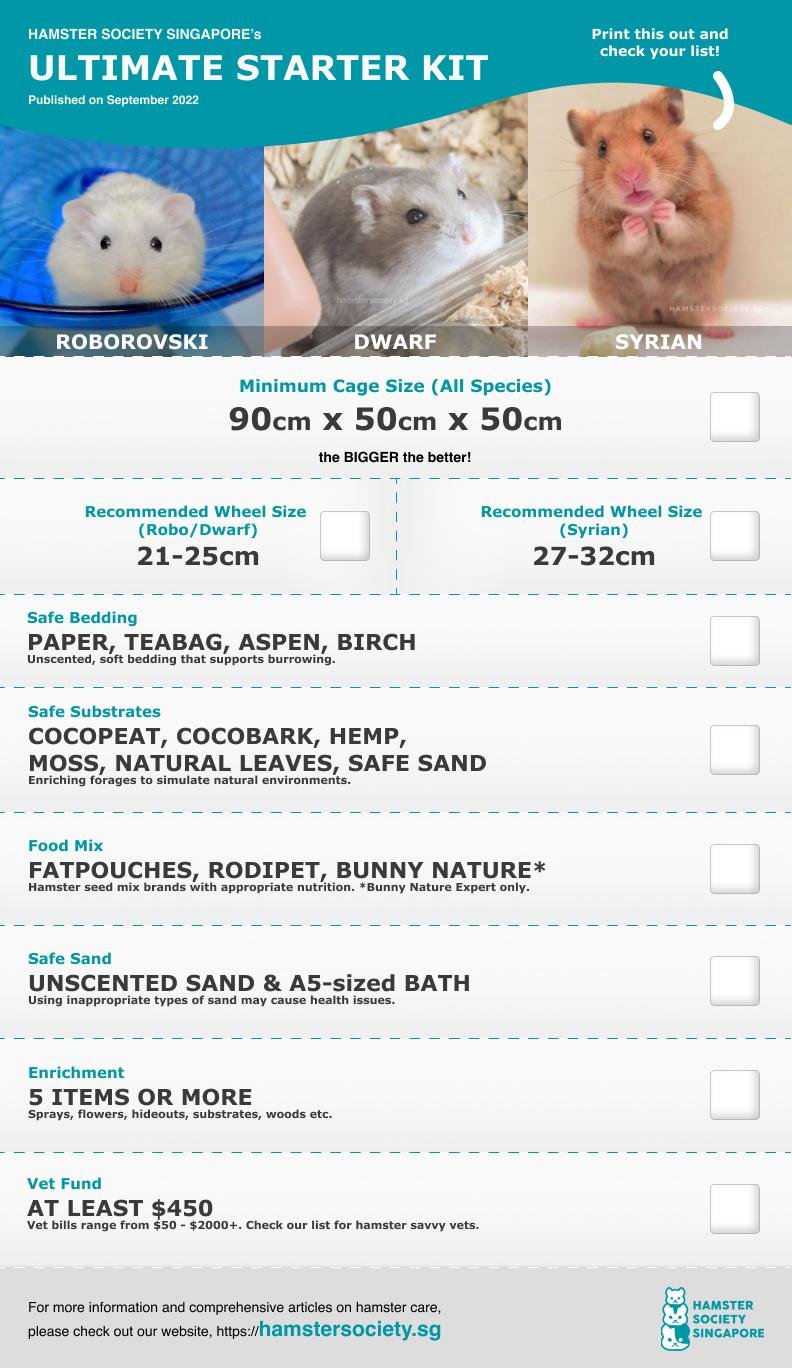Hamster Care for Different Breeds
Hamsters are small, adorable pets that bring joy to many households around the world. However, providing the appropriate care for your hamster requires knowledge of the various breeds and their specific needs. This article will guide you through effective hamster care tailored to different breeds, including tips on habitat setup, diet, exercise, and health considerations to ensure your furry friend lives a happy and healthy life.
Understanding Hamster Breeds
There are several different breeds of hamsters, each with unique characteristics and care requirements. The most common hamster breeds include the Syrian hamster, Campbell’s dwarf hamster, Winter White dwarf hamster, and Roborovski hamster. Understanding these breeds’ backgrounds is crucial for effective care. For instance, Syrian hamsters, known for their larger size, require more space compared to dwarf breeds that thrive in smaller cages. When selecting a hamster, take into consideration its breed, personality, and specific care needs to provide the best home possible.
Syrian Hamster Care
The Syrian hamster, also known as the golden hamster, is one of the most popular breeds due to its friendly nature and easy handling. When caring for Syrian hamsters, it is essential to provide a spacious cage that features appropriate hiding spots and climbing opportunities. Ideally, the cage should be at least 24 inches by 12 inches with vertical space for climbing. Syrian hamsters are solitary creatures and must be housed alone to avoid fighting.

When it comes to diet, high-quality hamster pellets, supplemented with fresh vegetables and occasional treats like fruit, are ideal. Ensure that the water is constantly available and change it regularly. Also, provide hiding places and chew toys to cater to their natural behaviors, as well as regular handling to maintain their friendly disposition.
Dwarf Hamster Considerations
Dwarf hamsters, such as Campbell’s and Winter White hamsters, are smaller and more social than their Syrian cousins. They typically enjoy being housed with a same-sex companion, which encourages natural behaviors and social interactions. It’s crucial to monitor their interactions closely to prevent conflicts. A suitable cage for dwarf hamsters should still allow plenty of room for them to run and play, but the dimensions can be slightly smaller than those for Syrian hamsters.
Feeding dwarf hamsters involves similar guidelines—an appropriate blend of commercial hamster food, vegetables, and the occasional small treat. However, bear in mind that dwarf hamsters enjoy their exercise over vast spaces, making the provision of a hamster wheel crucial. In addition, their smaller size necessitates careful attention to their health, particularly regarding diabetes, which is common in Campbell’s dwarfs.
Creating the Perfect Habitat
Providing a well-constructed habitat is a crucial component of hamster care. Regarding cage setup, ensure that your hamster’s living space mimics their natural environment, emphasizing comfort and safety. **Bedding materials** like paper-based bedding or aspen shavings are great options for ensuring moisture absorption and odor control, while providing compartments for nesting. Dwarf hamsters particularly benefit from multiple levels or platforms in their cages, as they are naturally inclined to explore and climb.
General Habitat Setup
When setting up the habitat, be mindful of safety; ensure there are no sharp edges or hazards that can injure your hamster. Additionally, allocate space for essential items such as food dishes, hiding spots, and enrichment tools like tunnels. You can enhance their habitat with safe chew toys, especially wood or cardboard options. Natural materials not only provide necessary stimulation but also promote dental health.
Enrichment and Playtime
Regular interaction and playtime are essential for your hamster’s mental and physical health. Allow your hamsters to explore outside of their cages in a safe, enclosed area. You can create a zone with various obstacles or tunnels for them to navigate. This not only helps alleviate boredom but promotes happiness and well-being in your little companions. Schedule playtime a few times a week for at least 30 minutes to keep them healthy and engaged.
Feeding Your Hamster
Diet is one of the most significant aspects of hamster care. Each breed has slightly different dietary needs, but a few general principles apply to all hamsters. High-quality store-bought hamster food—either pellets or a seed mix—should serve as the foundation of their diet. Additionally, fresh vegetables like cucumbers, carrots, and leafy greens can be introduced for added nutrition. However, fruits should be offered sparingly due to their high sugar content.
Critical Foods to Include
Some crucial components of a hamster’s diet include seeds, nuts, grains, and fresh produce tailored to the breed. For example, Syrian hamsters can safely consume almonds and walnuts, while dwarf hamsters should avoid seeds that are particularly high in fat. A variety of foods improves their overall health and can prevent obesity or other dietary issues. Supplements like calcium and specialized treats should also be included but in moderation.
Monitoring Health and Hygiene
Regular health checks are essential for maintaining your hamsters’ well-being. Keep an eye out for any signs of illness, including lethargy, changes in appetite, or unusual behaviors. Maintaining proper hygiene is just as important—regularly clean the cage, replacing soiled bedding to promote a hygienic environment. Additionally, routine health checks and consults with a veterinarian experienced in small animals can ensure a long and healthy life for your pet.
Key Takeaways
- Understanding the breed-specific needs is crucial for effective hamster care.
- Providing an enriching habitat aids in mental stimulation and well-being.
- A balanced diet is fundamental to your hamster’s health, with careful consideration of breed differences.
- Regular interaction, playtime, and proper hygiene checks contribute to your hamster’s happiness and health.
- Always consult a veterinarian for health concerns and guidance tailored to your specific hamster breed.
FAQ
1. Can hamsters live together in pairs or groups?
Only certain breeds, such as dwarf hamsters, may live together in pairs or small groups of the same sex. Syrian hamsters are territorial and should be housed alone to prevent fighting. Always monitor their interactions closely for signs of aggression.
2. How often should I clean my hamster’s cage?
It is advisable to clean your hamster’s cage at least once a week. During cleaning, remove old bedding, waste, and uneaten food. A thorough cleaning will ensure a hygienic environment and can help prevent illnesses.
3. What type of bedding is safe for hamsters?
Safe bedding options include paper-based bedding and aspen shavings. Avoid cedar and pine shavings, as those can be harmful to your hamster’s respiratory health. Always ensure the bedding is soft and absorbent to create a comfortable habitat.
4. What do I do if my hamster is lethargic?
If you notice your hamster becoming lethargic, it’s vital to assess their environment and habits. Ensure they are eating and drinking. If the lethargy persists, contact a veterinarian to investigate any potential underlying health issues.
5. How can I tell if my hamster is overweight?
Monitor your hamster’s overall size and shape; a healthy hamster should have a small waist when viewed from above. Excess fat can restrict movements, leading to health problems. Consult your veterinarian to ensure a balanced dietary plan and address any concerns.
